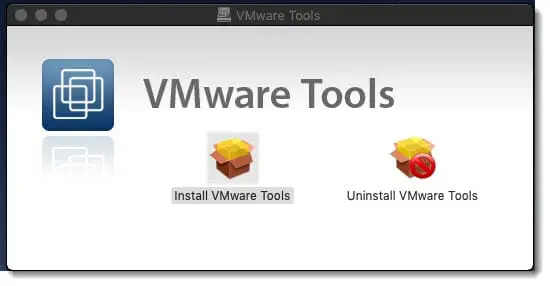

- Vmware tools iso for mac os h how to#
- Vmware tools iso for mac os h install#
- Vmware tools iso for mac os h code#
Vmware tools iso for mac os h code#
Download / sync source code (Ubuntu 9.10)
Vmware tools iso for mac os h install#
install qemu: sudo apt-get install qemu (if prompted select y)ģ.It will run for a considerable amount of time, when complete you will be returned to a command prompt.If prompted do you want to continue, press y.When prompted for REPLACE SYSTEM LINKER ld with gold and back up ld, select y or press enter.It will save to ~/Downloads, so cd to that directory. Start a terminal session: Applications -> Accessories -> Terminal.Configure dependencies and tools (Ubuntu 9.10) If it doesn’t finish after quite some time, just power off and restart, it should boot into the GUIĢ. VMware Tools will install automatically, you will be placed at a login prompt, wait while it installs, it will eventually restart into the GUI.Installation will start and proceed, eventually it will restart and you will receive a login prompt, login with the user and password specified above.Also be sure to check the option to split the VMDK into 2 GB chunks, which makes backup/restore more granular and easier to manage. There’s really no reason to go conservative if you are using a dynamically expanding VMware virtual disk, the complete size will only be used if needed. Increase the disk size as 20 GB is a bit small for a build machine, 100 GB should be fine.Change networking to bridged (if desired, leaving as NAT should work fine as well).In this example, I have created a Desktop folder named “Ubuntu Share” Enable sharing, create a folder on the Mac to share with Read/Write access.

Operating System: Linux, Version: Ubuntu.Use an operating system installation disc image file.Create Ubuntu 9.10 virtual machine under VMware Fusion 3 (Mac OS X) Lastly, the Chromium OS discussion group and the #chromium-os channel on are good resources for getting quick answers from knowledgeable people. I like VMs for these purposes, while there may be a performance tax, it allows easy snapshots (can roll back to a snapshot if need be) and help avoids adding too much clutter on my main machine. Most, if not all, of this information is available via the Chromium OS pages, gdgt, and some other sources, however, these instructions are meant to be easier to follow for anyone with this specific build environment (using VMware Fusion on Mac OS X).
Vmware tools iso for mac os h how to#
I have now updated the steps to list how to build the browser from source, or use the pre-built binary. At this time of the original post I couldn’t get chromium (the browser portion) to actually build, as it had compilation errors, and it required a pre-built browser binary, which was graciously provided by Mohamed Mansour.

Here’s a step by step breakdown of how to build Chrome OS under Ubuntu 9.10 (running as a virtual machine with VMware Fusion on Mac OS X) and testing the built image also via VMware Fusion.


 0 kommentar(er)
0 kommentar(er)
